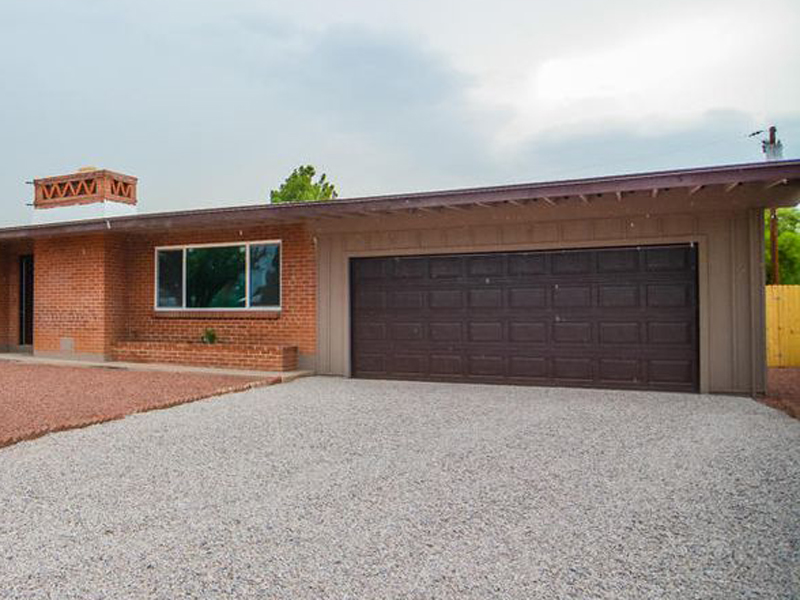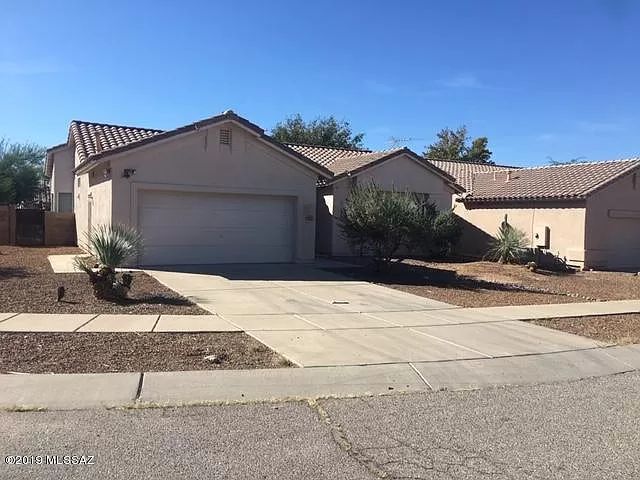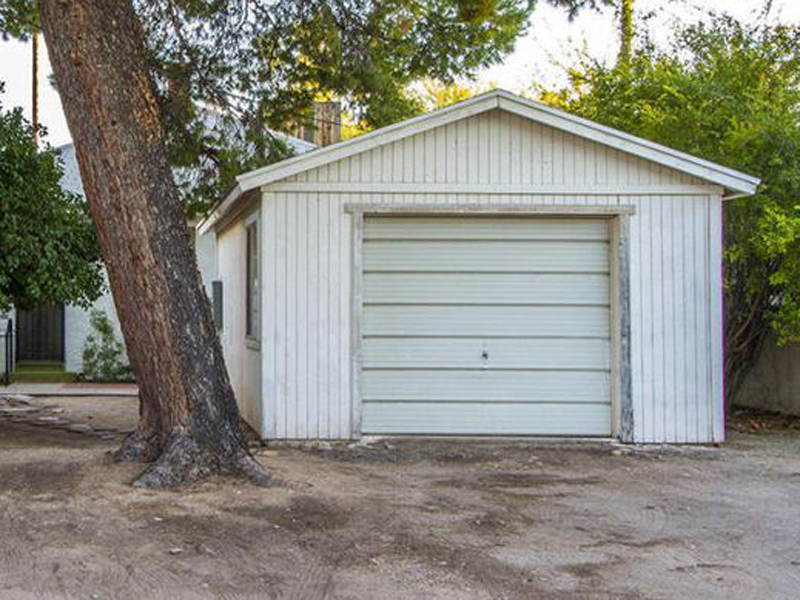Is Your Garage Door Stuck? Here's What to Do Very first
When your garage door won't open, begin with these important safety and security checks before attempting any type of repair work. Initially, guarantee no person is standing near the door and that cars are free from the opening. Search for apparent signs of damages like broken panels, bent tracks, or hanging cables. If you see a snapped spring or significantly harmed parts, stop quickly and call a specialist—-- these repair work need specific devices and expertise to take care of securely.

Inspect These 6 Points Prior To Calling a Professional
Prior to thinking you need costly repair services, go through this quick diagnostic list that addresses most garage door problems:
-
Power source: Verify the opener is plugged in and the electrical outlet is working
-
Remote batteries: Change dead batteries in your push-button control
-
Hands-on lock: Inspect if someone accidentally engaged the hands-on lock
-
Blockages: Try to find debris blocking the door's course or sensing units
-
Emergency situation release: Ensure the red emergency situation cable hasn't been drawn
-
Breaker: Validate the garage circuit hasn't stumbled
These easy checks settle about 70% of garage door concerns without requiring specialist treatment.
10 Common Factors Your Garage Door Will Not Open
Understanding why your garage door opener isn't working aids you choose the best remedy. Here are one of the most regular reasons house owners encounter:
Dead remote batteries stand for the most basic fix—-- when batteries pass away, the remote can't send signals to the opener. Power blackouts or stumbled breakers cut electrical energy to the electric motor. Broken springs stop the door from lifting appropriately and require prompt specialist focus. Sensing unit imbalance reasons safety systems to obstruct door operation. Track obstructions quit rollers from moving smoothly. Motor overload triggers automated shutoffs when the opener discovers resistance. Restriction switch issues confuse the opener about door position. Cable damage interferes with the training system. Weather-related problems influence door movement throughout extreme temperatures. Element wear from age gradually reduces system efficiency.
Problem # 1: Dead Remote Batteries
When your wall button functions however your remote doesn't, dead batteries are normally the perpetrator. The majority of garage door remotes use either 3-volt lithium or 12-volt alkaline batteries. Remove the back cover of your remote and inspect the battery type. Change with fresh batteries and check the remote. If it still doesn't function, you may require to reprogram it to your opener. Consult your opener's manual for particular reprogramming instructions, as the procedure differs by maker.
Trouble # 2: Power Supply Issues
Garage door power problems often come from loose connections or tripped circuits. Check that the opener is securely plugged into its outlet—-- vibration can loosen up connections with time. Examine the electrical outlet with an additional tool to verify it's working. Analyze your home's breaker box for tripped circuits, specifically if you've experienced storms or power fluctuations. GFCI outlets might have stumbled and require resetting. If the opener has power but will not respond, the concern most likely lies in other places in the system.
Trouble # 3: Broken or Damaged Springs
Broken garage door springs are among one of the most harmful components to deal with. If you listen to a loud bang from your garage or see the door really feels very hefty when trying to lift manually, a springtime has actually likely snapped. Torsion springs run horizontally above the door, while expansion springtimes rest on either side. Never ever try spring repair services on your own—-- these elements store significant tension that can trigger serious injury or fatality. Expert substitute usually costs $150-$300 however guarantees your safety.
Trouble # 4: Blocked Safety And Security Sensing Units
Modern garage doors include safety and security sensors that protect against closure when objects are discovered. These sensing units can stop the door from opening up if they're unclean, misaligned, or obstructed by particles. Tidy sensor lenses with a soft fabric and make certain absolutely nothing blocks the undetectable beam of light between them. Check that sensors are properly aligned—-- a lot of have sign lights that reveal link condition. Sensor troubles usually fix with straightforward cleaning and modification.
Trouble # 5: Track Obstructions or Damages
Garage door tracks guide rollers as the door moves up and down. Dust, debris, old oil, or tiny objects can jam the system. Evaluate tracks visually and get rid of any obstructions with a brush or towel. Seek damages, bends, or bending that could hinder smooth operation. Small track changes are feasible for handy homeowners, yet significant damage needs professional repair service to stop further troubles or safety risks.
Trouble # 6: Garage Door Opener Electric Motor Issues
When the garage door electric motor runs however the door does not move, numerous concerns could be accountable. The electric motor might be overwhelmed and turning off as a safety measure. Gear wear, particularly in older devices, can avoid correct procedure. Chain or belt drive problems affect power transmission. If you listen to unusual grinding, clicking, or humming audios, stop utilizing the opener right away. Motor fixings usually cost greater than replacement, especially for units over one decade old.
Step-by-Step DIY Troubleshooting Guide
Follow this organized approach to garage door fixing while prioritizing safety and security throughout the procedure:
Action 1: Check the wall switch first. If it works yet the remote does not, concentrate on remote problems. If neither works, check power supply.
Step 2: Take a look at the hands-on release cord. If it's been drawn, the opener is disengaged from the door. Press the cart back to reconnect.
Action 3: By how to handle a garage door off the rails hand test the door by disengaging the opener and trying to lift the door by hand. It should relocate efficiently and stay in area when half-open.
Step 4: Evaluate noticeable parts for damages, paying unique attention to springs, cables, and tracks.
Tip 5: Inspect all safety attributes including sensing units, limit buttons, and auto-reverse features.
Step 6: Test different controls (remote, wall surface switch, keypad) to separate the issue resource.
Constantly wear shatterproof glass and work gloves when doing assessments, and never ever attempt repair services on springtimes or high-tension components.
When to Call an Expert vs. do it yourself Solutions

Recognizing when to call a garage door professional versus attempting do it yourself repairs shields both your safety and your wallet. Deal with these issues yourself: dead remote batteries, power supply issues, small track cleaning, sensing unit cleansing and positioning, and basic lubrication.
Never ever attempt these repair services yourself: springtime replacement or change, cord repair services, significant track realignment, electric wiring issues, opener motor substitute, or any fixing involving high-tension elements. Professional specialists have actually specialized tools, training, and insurance to deal with dangerous repair services securely.
Take into consideration repair expenses versus substitute expenses, particularly for doors over 15 years of ages. Modern garage doors offer much better safety and security attributes, energy efficiency, and integrity than older models.
Emergency Situation Garage Door Solutions
When you're stuck to a garage door that won't open and require prompt accessibility, follow these emergency situation procedures:
Handbook Operation: Pull the red emergency launch cable to disengage the opener. This allows hands-on operation but calls for correct method to avoid injury. Lift the door gradually and equally, utilizing leg muscle mass instead of your back. Most domestic doors consider 100-150 pounds, making them workable for the majority of grownups.
Momentary Repairs: If the door opens up manually but will not keep up, prop it open with sawhorses or clamps—-- never use your body or lorries as assistances. For doors that won't shut entirely, ensure the opening is protected if you have to leave.
Emergency Service: Numerous garage door firms provide 24/7 emergency service for situations including safety and security problems, entraped cars, or complete system failures. While much more expensive than normal service calls, emergency situation repair services supply instant options when needed most.
Safety Caution: What NOT to Do
Garage door safety and security needs understanding dangerous repair services that must never ever be tried by home owners:
Never ever attempt to repair springtimes—-- they save enough energy to cause fatal injuries when they snap or are incorrectly managed. Don't compel a stuck door—-- this can damage the opener, tracks, or door panels, creating much more costly problems. Prevent bypassing security functions—-- sensing units and auto-reverse systems protect against serious injuries and building damage.
Do not ignore strange noises—-- grinding, scraping, or banging sounds suggest troubles that worsen over time. Never ever utilize the door if cable televisions are torn or broken—-- the door might fall unexpectedly. Do not try electric repair services unless you're a certified electrician—-- garage door openers make use of both 120V home existing and low-voltage control circuits.

Preventive Maintenance to Stay Clear Of Future Issues
Regular garage door upkeep prevents most common issues and prolongs system life expectancy dramatically:
Monthly Jobs: Aesthetic examination of all components, evaluating auto-reverse security attributes, examining and tightening equipment, and cleansing tracks and sensing units.
Quarterly Tasks: Lubing all moving get rid of ideal garage door lubricant, screening guidebook procedure, and inspecting weather condition sealing.
Annual Jobs: Specialist evaluation and tune-up, spring change if required, and opener upkeep including belt or chain change.
Seasonal Jobs: Planning for weather extremes, inspecting insulation, and adjusting opener setups for temperature modifications.
Consistent upkeep costs much less than emergency repairs and makes certain trustworthy procedure year-round.
Garage Door Will Not Open Frequently Asked Questions
Why won't my garage door open with the remote yet collaborates with the wall button?
This typically indicates dead remote batteries, signal interference, or the need to reprogram the remote. Examine batteries initially, then consult your opener handbook for reprogramming instructions.
Can I by hand open my garage door if the power is out?
Yes, pull the red emergency launch cord to disengage the opener, after that raise the door by hand. Be gotten ready for the door's complete weight and lift with correct technique to prevent injury.
How do I know if my garage door spring is damaged?
Indicators consist of a loud bang from the garage, the door feeling exceptionally heavy when raising by hand, visible voids in the spring coils, or the door just opening a few inches before quiting.
Is it secure to use my garage door if it will not open up right?
No, partial operation suggests mechanical troubles that might worsen unexpectedly. Stop utilizing the door and have it inspected by a specialist to prevent further damage or injury.
What should I do if my garage door opens up yet will not shut?
Check security sensors for blockages or misalignment, examine the tracks for particles, and evaluate the auto-reverse function. If these don't resolve the problem, seek advice from an expert.
Just how much does it cost to deal with a garage door that will not open?
Prices differ extensively depending upon the issue: battery substitute ($5-$10), expert diagnosis ($50-$100), springtime substitute ($150-$300), or opener replacement ($200-$500).
Can weather impact my garage door's capability to open up?
Yes, severe cold can enlarge lubes and impact metal parts, while heat can trigger growth problems. Most problems settle as temperature levels normalize, however persistent concerns may require specialist interest.
Why does my garage door open a few inches then quit?
This normally shows busted springtimes, limit switch problems, or track blockages. The opener's safety features quit operation when resistance is found, stopping damages to the motor or door.
Obtain Expert Help for Complicated Issues
When DIY fixing doesn't solve your garage door problems, specialist service technicians supply the experience and devices needed for risk-free, lasting repairs. Certified specialists diagnose issues accurately, utilize manufacturer-approved parts, and supply service warranties on their job.
Professional services include: thorough system examinations, springtime and wire substitute, opener repair work and replacement, track placement and substitute, electric troubleshooting, and emergency service phone calls.
What to anticipate: ahead of time pricing, qualified and insured service technicians, same-day solution for lots of repair work, and follow-up upkeep recommendations.
Most garage door firms offer free quotes for significant repairs and can offer immediate solutions for immediate issues affecting home safety and security or car gain access to.
Getting Your Garage Door Working Again
A garage door that won't open doesn't need to destroy your day or break your spending plan. Begin with simple troubleshooting steps like checking power, replacing batteries, and analyzing for noticeable blockages. Lots of troubles have fast do it yourself options that bring back regular operation within mins.
However, identify when professional aid is necessary—-- especially for spring-related problems, electrical troubles, or complex mechanical failings. Attempting harmful repair work yourself runs the risk of severe injury and frequently develops much more costly troubles.
Normal maintenance stops most garage door problems and makes certain trusted procedure for several years to find. When troubles do occur, resolve them promptly to prevent even more pricey repairs and maintain your home's security and ease. Whether you need a basic battery replacement or full system overhaul, options exist to get your garage door functioning efficiently once again.